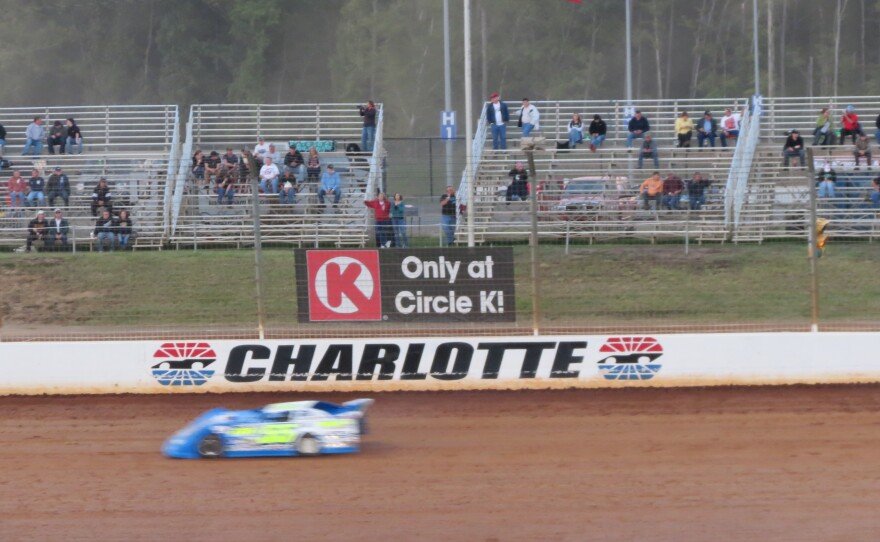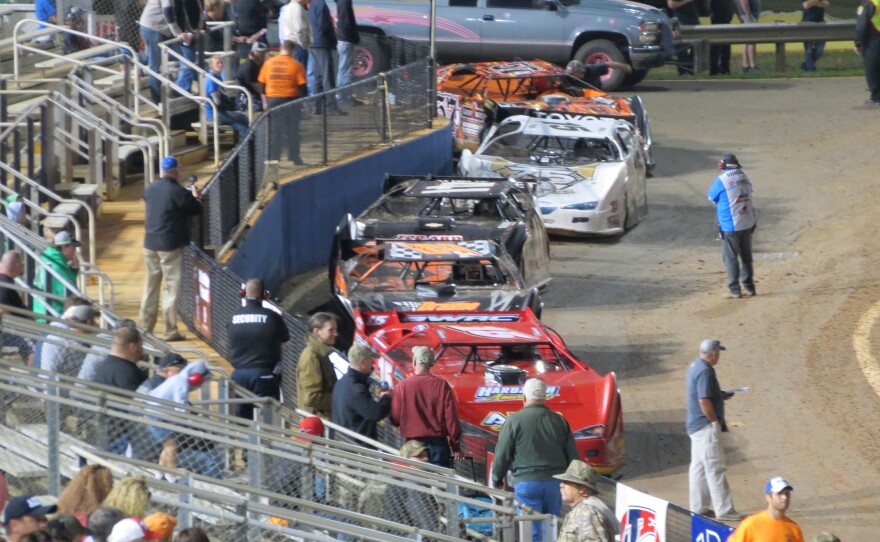Another Race Week is underway. The Bank of America 500 takes place Saturday at Charlotte Motor Speedway. The buzz that surrounds racing is a new experience for many newcomers to the Charlotte area, including WFAE’s Tasnim Shamma. She’s from New York City – not exactly a NASCAR hotbed. But she's determined to learn about the sport, and the pull it has with fans. So she attended one of this week’s smaller races held as part of Race Week. It was a dirt-track event known as the Circle K Late Model Showdown. She shares some of her observations:
So a little bit about me: I grew up in New York City watching NASCAR and Indy races. But it wasn’t because I wanted to. My brothers controlled the remote.
So every time there was a race on, I sat and watched with them, hoping they would change the channel to Xena: The Warrior Princess during commercial breaks.
But all of that television was no preparation for the first race I was about to experience at the Charlotte Motor Speedways Dirt Track.
We were in the middle. To our left, there was the NASCAR Super Speedway, the drag strip for drag racing was on our left. But the tracks were all different.
Charles Myers was my tour guide for the evening. He's a 20-year-old sophomore majoring in public relations at UNC-Charlotte. He’s a big racing fan and has been drag-racing since the age of nine.
"When you’ve got a track covered in dirt, you don’t have the tendency to grab the traction that you would on asphalt," Myers says. "You’re going to see the cars slinging to the corners, running 120-130 miles per hour and they’re going to have the tendency to slide a lot more than what you’d see on the NASCAR circuit.”
Here’s what we were looking at: Mud. A lot of mud. The oval track is only four-tenths of a mile. I thought the track was supposed to be asphalt. I asked Charles what was up with all the dirt.
"Originally it started out mimicking how the moonshiners had to get away ‘cause you know the nooks and crannies of the mountains," Myers says. "And moonshiners would essentially run away from the policeman back in the 1920s and ‘30s during Prohibition. And this is how NASCAR got its start.”
In 1948, Bill France Sr. founded NASCAR in Daytona and the next year, the first strictly stock-car race was held on a dirt-track in Charlotte.
Charles explained the basics to me. When the flag-man raises the green flag, the cars can go, yellow means there’s debris on the track and they should slow down, a white flag means they have one lap to go and then there’s the checkered flag that marks the end of the race.
There were close to 100 drivers. Some just love dirt-track racing, others were here looking for their big break. But first, there’s qualifying races with a lot of delays mixed in.
The first crash of the evening involved a driver with a prosthetic leg who was able to get out of his car quickly. And then there was another crash. And then another. The yellow caution flag was raised close to 20 times. I turned to Charles.
What I understood was that first there were some hot laps just to get used to the field. Then there were qualifying runs to see who was the fastest in each class.
"Right," he says. "You know the hot lap is essentially like happy hour. They’ll make final adjustments through a qualifying run and then they’re going to do the race.”
Four hours later, the heat races finally begin. These are basically more qualifiers to get into the night’s feature race. But by now, I'm a little bored.
Myers, who has been in the driver's seat, explains the down time is for the driver. It allows the engine to cool off and be more mentally prepared before the race.
I’m impressed with how well the drivers control their vehicles at such high speeds and how safe the cars are. And I finally understand what the big deal is. This is much more exciting in person than watching it on TV. You can feel the intensity.
But it was starting to look the same.
We left before the feature races started. Myers had an eight o’clock biology class the next morning and I had work.
And we’re glad we did, Rick Eckert and Brandon Overton were declared the winners of the two feature races three hours later – at midnight.





